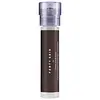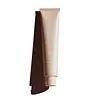Fenty Beauty Hydra Vizor Huez Tinted Moisturizer Broad Spectrum Mineral SPF 30 Sunscreen Versus Airyday Mineral Mousse SPF50+ Dreamscreen
What's inside
What's inside
 Key Ingredients
Key Ingredients

 Benefits
Benefits

 Concerns
Concerns

 Ingredients Side-by-side
Ingredients Side-by-side

Zinc Oxide 15.5%
Cosmetic ColorantWater
Skin ConditioningC12-15 Alkyl Benzoate
AntimicrobialCaprylic/Capric Triglyceride
MaskingC15-19 Alkane
SolventButyloctyl Salicylate
Skin ConditioningPhenyl Trimethicone
Skin ConditioningGlyceryl Citrate/Lactate/Linoleate/Oleate
EmulsifyingDimethicone
EmollientSorbitan Isostearate
EmulsifyingEthylhexyl Palmitate
EmollientButylene Glycol
HumectantQuaternium-90 Bentonite
Polyhydroxystearic Acid
EmulsifyingNiacinamide
Smoothing1,2-Hexanediol
Skin ConditioningAdansonia Digitata Pulp Extract
EmollientAloe Barbadensis Leaf Juice
Skin ConditioningBarosma Betulina Leaf Extract
PerfumingCaprylyl Glycol
EmollientCaprylyl/Capryl Glucoside
CleansingCetyl Alcohol
EmollientCitric Acid
BufferingCitrullus Lanatus Seed Extract
Skin ConditioningDisteardimonium Hectorite
StabilisingEthylhexylglycerin
Skin ConditioningGlycerin
HumectantGlyceryl Stearate Se
EmulsifyingHyaluronic Acid
HumectantHydroxyethyl Acrylate/Sodium Acryloyldimethyl Taurate Copolymer
Emulsion StabilisingIsopropyl Titanium Triisostearate
EmollientPhenoxyethanol
PreservativePolyisobutene
Polysilicone-11
Potassium Sorbate
PreservativeSilica
AbrasiveSodium Acrylate/Sodium Acryloyldimethyl Taurate Copolymer
Emulsion StabilisingSodium Benzoate
MaskingSodium Hyaluronate
HumectantSorbitan Oleate
EmulsifyingTocopherol
AntioxidantTocopheryl Acetate
AntioxidantTriethyl Citrate
MaskingXanthan Gum
EmulsifyingIron Oxides
Titanium Dioxide
Cosmetic ColorantZinc Oxide 15.5%, Water, C12-15 Alkyl Benzoate, Caprylic/Capric Triglyceride, C15-19 Alkane, Butyloctyl Salicylate, Phenyl Trimethicone, Glyceryl Citrate/Lactate/Linoleate/Oleate, Dimethicone, Sorbitan Isostearate, Ethylhexyl Palmitate, Butylene Glycol, Quaternium-90 Bentonite, Polyhydroxystearic Acid, Niacinamide, 1,2-Hexanediol, Adansonia Digitata Pulp Extract, Aloe Barbadensis Leaf Juice, Barosma Betulina Leaf Extract, Caprylyl Glycol, Caprylyl/Capryl Glucoside, Cetyl Alcohol, Citric Acid, Citrullus Lanatus Seed Extract, Disteardimonium Hectorite, Ethylhexylglycerin, Glycerin, Glyceryl Stearate Se, Hyaluronic Acid, Hydroxyethyl Acrylate/Sodium Acryloyldimethyl Taurate Copolymer, Isopropyl Titanium Triisostearate, Phenoxyethanol, Polyisobutene, Polysilicone-11, Potassium Sorbate, Silica, Sodium Acrylate/Sodium Acryloyldimethyl Taurate Copolymer, Sodium Benzoate, Sodium Hyaluronate, Sorbitan Oleate, Tocopherol, Tocopheryl Acetate, Triethyl Citrate, Xanthan Gum, Iron Oxides, Titanium Dioxide
Zinc Oxide 20%
Cosmetic ColorantIsododecane
EmollientCoco-Caprylate/Caprate
EmollientButyloctyl Salicylate
Skin ConditioningCyclohexasiloxane
EmollientCyclopentasiloxane
EmollientTrihydroxystearin
Skin ConditioningPolymethylsilsesquioxane
Cetyl Dimethicone
EmollientSilica Silylate
EmollientPolysilicone-11
Polyglyceryl-3 Polyricinoleate
EmulsifyingHydroxyapatite
AbrasiveSodium Hyaluronate
HumectantTocopheryl Acetate
AntioxidantGlycine Soja Oil
EmollientTitanium Dioxide
Cosmetic ColorantButyrospermum Parkii Butter
Skin ConditioningOryza Sativa Extract
AbsorbentOryza Sativa Germ Extract
EmollientIsostearic Acid
CleansingMica
Cosmetic ColorantPolyglyceryl-3 Diisostearate
EmulsifyingEthylhexyl Palmitate
EmollientTin Oxide
AbrasiveEthyl Linoleate
EmollientSilica Dimethyl Silylate
EmollientAscorbyl Tetraisopalmitate
AntioxidantPentylene Glycol
Skin ConditioningButylene Glycol
HumectantCI 77492
Cosmetic ColorantCI 77491
Cosmetic ColorantCI 77499
Cosmetic ColorantZinc Oxide 20%, Isododecane, Coco-Caprylate/Caprate, Butyloctyl Salicylate, Cyclohexasiloxane, Cyclopentasiloxane, Trihydroxystearin, Polymethylsilsesquioxane, Cetyl Dimethicone, Silica Silylate, Polysilicone-11, Polyglyceryl-3 Polyricinoleate, Hydroxyapatite, Sodium Hyaluronate, Tocopheryl Acetate, Glycine Soja Oil, Titanium Dioxide, Butyrospermum Parkii Butter, Oryza Sativa Extract, Oryza Sativa Germ Extract, Isostearic Acid, Mica, Polyglyceryl-3 Diisostearate, Ethylhexyl Palmitate, Tin Oxide, Ethyl Linoleate, Silica Dimethyl Silylate, Ascorbyl Tetraisopalmitate, Pentylene Glycol, Butylene Glycol, CI 77492, CI 77491, CI 77499
 Reviews
Reviews

Ingredients Explained
These ingredients are found in both products.
Ingredients higher up in an ingredient list are typically present in a larger amount.
Butylene Glycol (or BG) is used within cosmetic products for a few different reasons:
Overall, Butylene Glycol is a safe and well-rounded ingredient that works well with other ingredients.
Though this ingredient works well with most skin types, some people with sensitive skin may experience a reaction such as allergic rashes, closed comedones, or itchiness.
Learn more about Butylene GlycolButyloctyl Salicylate is a chemical UV filter structurally similar to octisalate. It is a photostabilizer, SPF booster, emollient and solvent. This ingredient helps evenly spread out ingredients.
According to a manufacturer, it is suitable for pairing with micro Titanium Dioxide, Zinc Oxide, and pigments.
Photostabilizers help stabilize UV-filters and prevents them from degrading quickly.
Learn more about Butyloctyl SalicylateEthylhexyl Palmitate, also known as octyl palmitate, is created from 2-ethylhexyl alcohol and palmitic acid. It is a fatty acid ester.
The fatty acid content of Ethylhexyl Palmitate makes it an emollient. Emollients help soften and hydrate your skin by trapping moisture within.
Ethylhexyl Palmitate is also used to help improve the texture of cosmetics. It helps other ingredient dissolve in products and help disperse ingredients more evenly.
You'll likely find this ingredient in sunscreen, as it is often used to mix UV-blocking ingredients such as avobenzone and ethylhexyl triazone.
It can also help stabilize the fragrances in a product as a fragrance fixative.
Ethylhexyl Palmitate can be used to substitute mineral oil.
Due to its high fatty acid content, it may not be fungal-acne safe.
Learn more about Ethylhexyl PalmitatePolysilicone-11 is a film-forming silicone that creates a non-tacky and matte finish on the skin. It's commonly used to improve texture, absorb excess oil, and help active ingredients spread evenly.
Due to its "rubber-like" structure, it stays on the skin's surface instead of being absorbed. On the skin, it creates a flexible layer that enhances wearability and stability.
Sodium Hyaluronate is hyaluronic acid's salt form. It is commonly derived from the sodium salt of hyaluronic acid.
Like hyaluronic acid, it is great at holding water and acts as a humectant. This makes it a great skin hydrating ingredient.
Sodium Hyaluronate is naturally occurring in our bodies and is mostly found in eye fluid and joints.
These are some other common types of Hyaluronic Acid:
Learn more about Sodium HyaluronateTitanium dioxide is a mineral UV filter widely used in sunscreens and cosmetics.
It is one of only two UV filters officially classified as “mineral” by regulatory agencies, the other being zinc oxide.
Titanium dioxide provides broad-spectrum protection mostly in the UVB and UVAII range, with some protection in the UVAI range.
While its UVA protection isn’t as strong as zinc oxide’s, the difference is minor.
A common myth is that mineral UV filters reflect UV light. However, modern research shows titanium dioxide absorbs UV radiation like chemical filters (~95% absorption & 5% reflection).
Thanks to its non-irritating nature, titanium dioxide is suitable for sensitive, acne-prone, or redness-prone skin. It is unlikely to cause "eye sting" like other sunscreen ingredients.
A major drawback of this ingredient is its white cast and thick texture. This is why mineral sunscreens often leave a white cast and are less cosmetically elegant than chemical/hybrid sunscreens.
To improve white cast and spreadability, micronized or nano-sized titanium dioxide is often used.
There are ongoing concerns surrounding nano-titanium oxide's impact on marine ecosystems.
There is no conclusive evidence that any form of titanium oxide (or any other sunscreen ingredients) will cause harm to marine ecosystems or coral reefs. The science is still developing but many consumers are keeping a close eye on this issue.
Please note, many destinations have reef-safety sunscreen rules. For instance, the U.S. Virgin Islands advises all visitors to use non-nano mineral sunscreens.
Nano mineral sunscreens once raised safety concerns about absorption into skin.
Extensive research has shown that they do not penetrate healthy or damaged skin; they remain safely on the surface and the top layer of dead skin (stratum corneum).
You'll likely find titanium dioxide bundled with alumina, silica, or dimethicone. These ingredients help make titanium dioxide highly photostable; this prevents it from interacting with other formula components under UV light.
Learn more about Titanium DioxideTocopheryl Acetate is AKA Vitamin E. It is an antioxidant and protects your skin from free radicals. Free radicals damage the skin by breaking down collagen.
One study found using Tocopheryl Acetate with Vitamin C decreased the number of sunburned cells.
Tocopheryl Acetate is commonly found in both skincare and dietary supplements.
Learn more about Tocopheryl AcetateZinc Oxide is a mineral broad-spectrum UV filter; it is the broadest UVA and UVB reflector approved by the FDA. It also has skin protectant and skin soothing properties.
Zinc oxide is one of the most effective broad-spectrum UV filters. It protects against UVB, UVAII, and UVAI. In comparison to its counterpart titanium dioxide, zinc oxide provides uniform and extended UVA protection.
Another great benefit? This ingredient is highly photostable so it won't degrade easily under sunlight.
A common myth is that mineral UV filters are widely believed to primarily reflect UV light.
However, modern research shows titanium dioxide absorbs UV radiation like chemical filters (~95% absorption & 5% reflection).
Zinc oxide has great skin soothing properties so you'll likely find this in sunscreens formulated for sensitive skin or babies/children. It is unlikely to cause "eye sting" like other sunscreen ingredients.
Regulatory agencies consider zinc oxide to be non-toxic and safe. It has also been shown to not penetrate the skin.
Unfortunately, this ingredient does leave a visible white cast. This is why mineral sunscreens are often less cosmetically elegant than chemical or hybrid ones.
In cosmetics, zinc oxide can be found in both non-nano and nano-sized forms. The nano version is used to reduce white cast and improve the texture of sunscreen formulas.
There are ongoing concerns surrounding nano-zinc oxide's impact on marine ecosystems and whether it can be absorbed into skin.
Regarding marine ecosystems and coral reefs, there is no conclusive evidence that any form of zinc oxide (or any other sunscreen ingredients) will cause harm. The science is still developing but many consumers are keeping a close eye on this issue.
Please note, many destinations have reef-safety sunscreen rules. For instance, the U.S. Virgin Islands advises all visitors to use non-nano mineral sunscreens.
There has also been some stir about whether micronized or nano zinc oxide has potential photoxicity and absorption through the skin/lungs.
An in-vitro (done in a test tube or petri dish) study demonstrated micronized zinc oxide to have potential phototoxicity. There's no need to fret; the EU Commission's Scientific Committee on Consumer Safety has stated, "The relevance of these findings needs to be clarified by appropriate investigations in vivo." Or in other words, further studies done on living organisms are needed to prove this.
Current research shows zinc oxide nanoparticles do not penetrate intact or sunburned skin. They either remain on the surface or in the outermost layer of dead skin (stratum corneum).
Zinc oxide is one of only two classified mineral UV filters with titanium dioxide being the other one.
Fun fact: Zinc has been used throughout history as an ingredient in paint and medicine. An Indian text from 500BC is believed to list zinc oxide as a salve for open wound. The Ancient Greek physician Dioscorides has also mentioned the use of zinc as an ointment in 1AD.
Learn more about Zinc Oxide